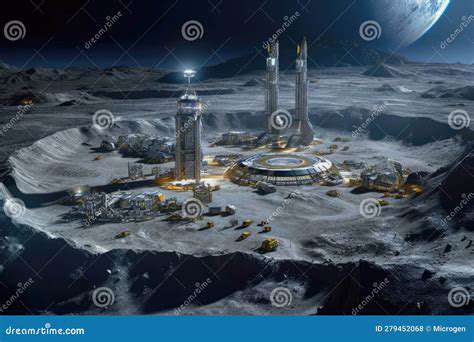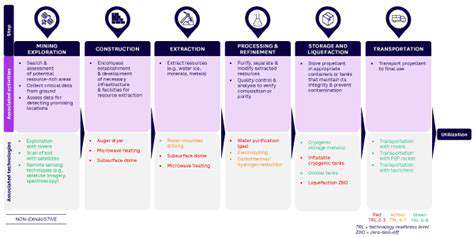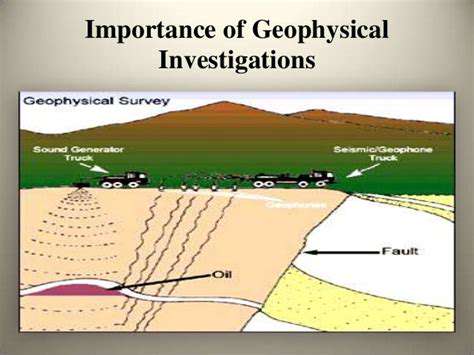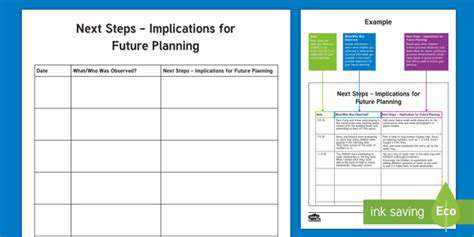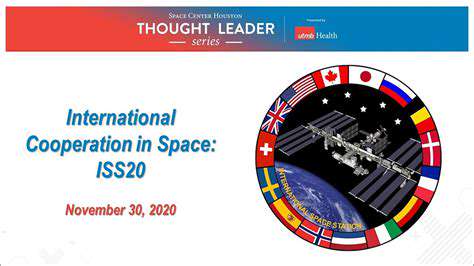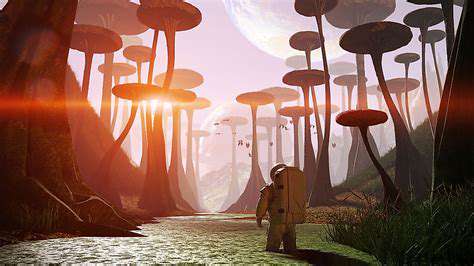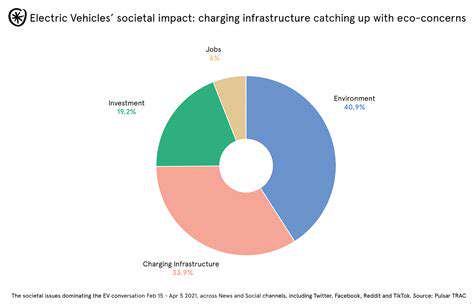The Soviet Luna Program
While the Soviet space program took a different approach than NASA's Apollo missions, their Luna projects made invaluable contributions to lunar exploration. These robotic missions, which included the first successful soft landings on the Moon, gathered crucial data about surface conditions and composition. Though the Soviets didn't develop true rovers comparable to America's Lunar Roving Vehicles, their achievements informed subsequent rover designs by revealing the Moon's environmental challenges.
The Luna program's sample return missions proved particularly significant. By retrieving lunar material and returning it to Earth, these missions gave scientists their first direct access to Moon rocks. This treasure trove of geological data directly influenced later rover designs, ensuring they could properly collect and analyze samples in the harsh lunar environment.
The Apollo Lunar Surface Experiments Package (ALSEP)
As a precursor to dedicated rovers, the ALSEP instruments demonstrated that sophisticated science could be conducted on the Moon's surface. These experiment packages, left behind by Apollo astronauts, continued operating long after the crews departed, monitoring seismic activity, magnetic fields, and solar wind interactions. Their success proved that extended scientific operations on the Moon were possible - a critical milestone for future rover missions.
The data from ALSEP transformed our understanding of the Moon's geology and internal structure. Scientists used these findings to identify ideal landing sites for future missions and to design rover instruments capable of answering more complex scientific questions about our celestial neighbor.
The Birth of the Lunar Rover: Apollo Missions
The iconic Lunar Roving Vehicles (LRVs) of Apollo 15, 16, and 17 marked a quantum leap in lunar exploration. These electric vehicles extended astronauts' range dramatically, allowing them to cover kilometers of terrain rather than mere hundreds of meters. The LRVs weren't just transportation - they were mobile science platforms, equipped with tools for sample collection and geological surveys.
The LRVs' success proved that wheeled vehicles could operate reliably in the Moon's low-gravity, high-vacuum environment. Their design solutions - from flexible wire mesh wheels to redundant systems - became foundational knowledge for all subsequent planetary rovers. Perhaps most importantly, they demonstrated how mobility could exponentially increase the scientific return from lunar missions.
The Future of Lunar Rovers: Beyond Exploration
Today's lunar rover missions have evolved far beyond pure exploration. Modern rovers are being designed as multipurpose tools for resource utilization and infrastructure development. The discovery of water ice in permanently shadowed craters has particularly transformed rover missions, with new vehicles specifically engineered to locate, extract, and potentially process these vital resources. Advanced sensors now allow rovers to identify mineral deposits that could support future lunar bases.
The next generation of rovers may feature robotic arms for construction, 3D printing capabilities for habitat building, and even artificial intelligence for autonomous decision-making. As international interest in the Moon grows, these versatile machines will play increasingly critical roles in establishing a sustained human presence on our nearest celestial neighbor.
The Impact of Lunar Rovers on Scientific Discovery
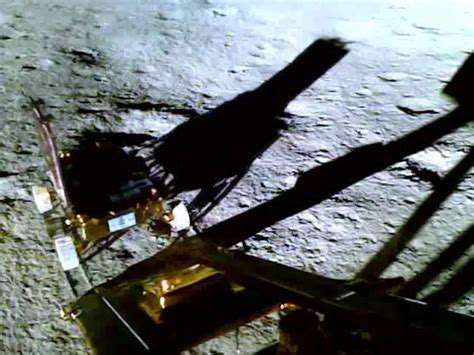
Lunar Rover Exploration: Expanding Scientific Horizons
Modern lunar rovers have transformed our understanding of the Moon by providing access to previously unreachable locations. Their mobility allows scientists to study geological features across diverse terrains, creating a comprehensive picture of lunar history that static landers could never achieve. Equipped with advanced spectrometers, microscopes, and sampling tools, these robotic explorers conduct sophisticated analyses that reveal the Moon's composition and evolution.
Enhanced Geological Mapping and Analysis
Rovers excel at creating detailed geological maps with resolution impossible from orbit. By studying outcrops and soil layers up close, they've uncovered evidence of ancient volcanic activity and catastrophic impacts. Their findings have revolutionized theories about the Moon's formation, particularly supporting the giant impact hypothesis that explains Earth-Moon system origins.
Resource Identification and Assessment
Contemporary rover missions focus heavily on locating valuable resources. Using neutron spectrometers and other instruments, they've confirmed water ice deposits in polar regions. This discovery has profound implications - water can be used for life support, radiation shielding, and even broken down into hydrogen and oxygen for rocket fuel.
Improved Understanding of Lunar Surface Processes
Long-duration rover missions monitor how the lunar surface changes over time. They've revealed how micrometeorite impacts continuously garden the soil, and how electrostatic forces cause dust to levitate. Understanding these processes is crucial for designing equipment that can survive long-term on the Moon.
Exploring the Potential for Future Human Missions
Rovers serve as pathfinders for human exploration, identifying safe landing zones and resource-rich areas. Their radiation measurements help design better protections for astronauts, while terrain assessments inform habitat placement and infrastructure planning.
Assessment of Lunar Hazards
By mapping treacherous features like deep craters and steep slopes, rovers create vital safety data for future missions. They've also revealed the surprising challenge of lunar dust, which clings to surfaces and damages equipment - a problem engineers are now working to solve.
Developing Advanced Robotic Technologies
The extreme lunar environment drives innovation in robotics. Rover missions have pioneered autonomous navigation, low-temperature electronics, and novel mobility systems that will benefit future missions to Mars and beyond. These technologies frequently find Earth-based applications in mining, disaster response, and remote exploration.
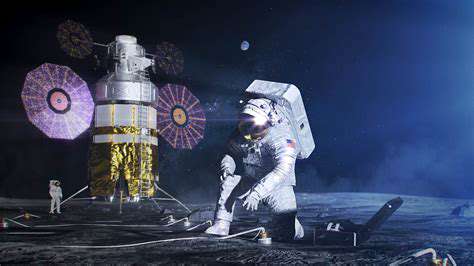
Beyond Exploration: Lunar Rovers as Precursors to Human Presence

Beyond the Initial Touchdown: Lunar Surface Exploration
Today's lunar rovers are evolving from scientific instruments into essential infrastructure for sustained lunar operations. They're being designed to conduct precursor missions - preparing sites for habitats, testing construction techniques, and verifying resource extraction methods. Their work will determine where and how humans can live and work on the Moon long-term.
Technological Advancements in Lunar Rovers
The latest rover prototypes showcase remarkable innovations: autonomous drilling systems, robotic arms with delicate sample handling capabilities, and power systems that survive the two-week lunar night. These advancements don't just benefit space exploration - they're pushing the boundaries of robotics and renewable energy technologies on Earth.
Scientific Discoveries from Lunar Rovers
Recent findings have upended old assumptions about the Moon. Rover-discovered young volcanic features suggest lunar geological activity persisted much longer than previously believed. Detection of rare earth elements and other valuable minerals has sparked interest in lunar mining. Perhaps most exciting, evidence of water molecules bound in soil across the Moon - not just at the poles - suggests more accessible resources than imagined.
Challenges in Lunar Rover Operations
Operating rovers on the Moon remains extraordinarily difficult. The combination of vacuum, extreme temperatures, abrasive dust, and communication delays creates unique engineering challenges. Solutions developed for these problems - like gearboxes that don't need lubrication or solar arrays that work at very low angles - have potential applications in Earth's harshest environments.
Future Applications and Implications
As lunar rovers become more capable, they'll take on roles as construction robots, mining equipment, and even caretakers for unmanned outposts. Their development is creating a new generation of space-capable robotics that will be essential for exploring Mars and other destinations. The lessons learned will shape how humanity expands beyond Earth.
Economic and Societal Impacts
The lunar rover industry is driving economic growth in the New Space sector. Private companies are developing commercial rovers for NASA and other space agencies, while universities worldwide participate in rover design competitions. This vibrant ecosystem is inspiring students to pursue STEM careers and accelerating technological progress across multiple industries.
